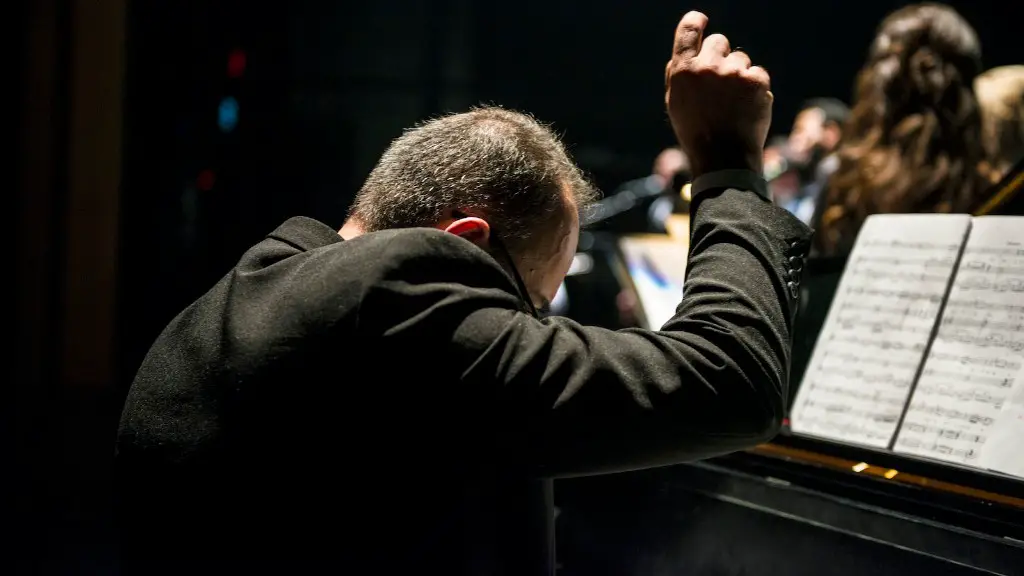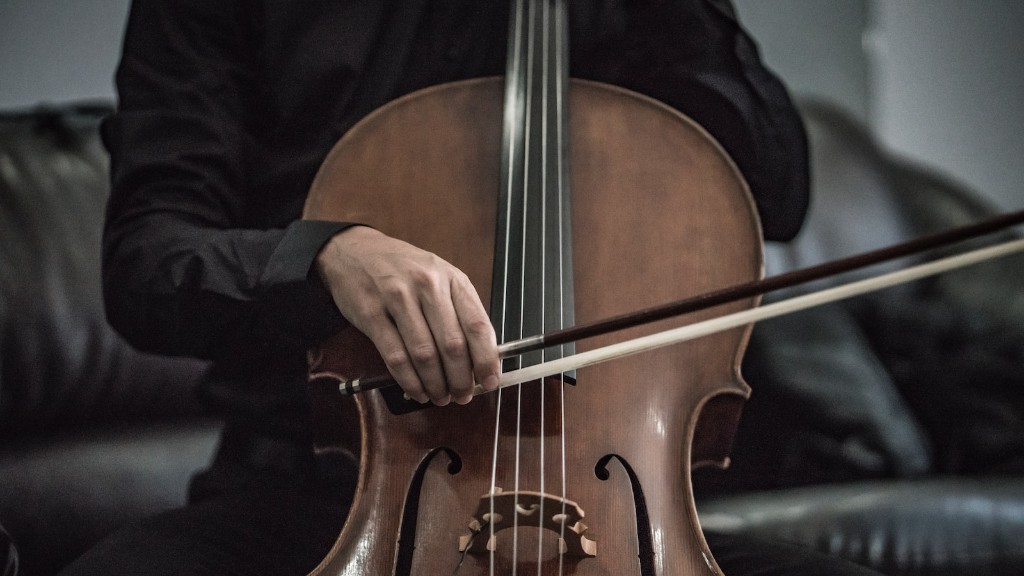A film soundtrack is the background or complementary music of a film. It is usually INTENDED to amplify the drama or emotion of the scene, andd is often made up of pieces of music that the viewer might not normally listen to on their own.
While a lot of people think that the music in movies is just an afterthought, it is actually a very important part of the filmmaking process. A good film soundtrack can make a movie better, while a bad one can ruin it.
If you’re interested in composing soundtracks for films, there are a few things you should keep in mind. First, you need to understand what the film is trying to achieve and what kind of mood the director is going for. Second, you need to be familiar with the film’s story and characters so that you can choose the right pieces of music to complement them. Finally, you need to have a good understanding of how to use music to create the desired effect.
If you want to compose soundtracks, you will need to have a good understanding of music theory and composition. You will also need to be able to create interesting and original melodies. Once you have these skills, you can start creating soundtracks for films, video games, and other media.
How are soundtracks composed?
The music in movies is often written by a film composer who is hired specifically for the production. The movie score can help to heighten the emotions in the film and create an aural mood for each scene. This is done with the help of sound effects and dialogue. The film’s composer usually writes the original score, but may also work with an orchestrator.
Digital technology and audio sampling have made it possible for many modern films to rely on digital samples to imitate the sound of acoustic instruments. This has made it possible for many scores to be created and performed wholly by the composers themselves, by using music composition software, synthesizers, samplers, and MIDI.
How to create your own soundtrack
There’s no need to be intimidated by the prospect of making your own music at home. With a little bit of know-how and the right tools, you can start crafting your own tunes in no time. Here’s what you need to do to get started:
1. Learn how to write melodies. This is the foundation of any good song, so it’s important to get a handle on how to write catchy and memorable melodies.
2. Learn how to write lyrics. Once you’ve got a handle on writing melodies, you’ll need to start coming up with lyrics to complement them.
3. Download and learn how to use a DAW. A DAW, or digital audio workstation, is a program that will allow you to record, edit, and mix your music.
4. Record your song using the DAW. Once you’ve got your song written, it’s time to hit the record button and capture your performance.
5. Create a drum beat. No song is complete without a solid drumbeat to drive it along.
6. Add the bassline. The bassline is another important element of any song, and it can really help to fill out the low end and give your tune
If you want to become a film composer, you need to gain practical and theoretical musical experience. You also need to learn about the film industry and prepare a resume and portfolio. Finally, you need to gain relevant experience and persevere through networking.
What are the three basic soundtrack elements?
There are three key elements to sound design: dialogue/production sound, sound effects, and music. Each of these elements play a vital role in creating the overall soundscape of a film, TV show, video game, or other audio production.
Dialogue/production sound is responsible for capturing and conveying the dialogue and other sounds that are essential to the story. This can be a challenge, as the sound needs to be clear and intelligible while also fitting within the overall tone of the production.
Sound effects are the sounds that help to create the atmosphere and bring the world to life. These can be anything from the sound of footsteps to the sound of a door closing.
Music is the final piece of the puzzle, and it can often be the most important. The right piece of music can set the tone, create an emotional response, and make the production feel complete.
The four elements of any type of music are melody, harmony, rhythm, and timbre.
The melody of a piece of music is a particular sequence of notes. The harmony of a piece of music is the way in which the melody is accompanied by other parts. The rhythm of a piece of music is the way in which the notes are played in time. The timbre of a piece of music is the quality of the sound produced.
Why are soundtracks so powerful?
When it comes to movies, the best way to set the atmosphere and intention of a scene is by the use of music and a soundtrack. As an audience member, this helps give you the tone and mood of what is happening in a scene, even before a specific moment happens.
The synchronization fees charged by music publishers for major studio films are usually between $15,000 and $60,000. The majority of synchronization fees range from $20,000 to $45,000. If the music budget is small, the synchronization fees can be lower. If the song is used several times in the motion picture or if the use is under the opening or closing credits, the synchronization fees can be higher.
What are the main elements of a soundtrack
A film’s soundtrack is made up of five different elements: dialogue, foley, sound effects, background and music. Each element plays an important role in creating the overall sound of the film.
Dialogue is the conversation between the characters in a film. It is recorded on the set during filming and is later mixed with the other elements of the soundtrack.
Foley is the sound of everyday objects being used in a film. It is recorded in a studio and added to the film in post-production.
Sound effects are the sounds of things happening in a film, such as footsteps, doors slamnig, etc. They are recorded in a studio and added to the film in post-production.
Background noise is any sound that is not specifically part of the dialogue, Foley or sound effects. It can include ambience, such as the sound of a busy street, or it can be diegetic, such as the sound of a character’s footsteps.
Music is an important part of a film’s soundtrack. It can be used to create atmosphere, to convey emotion, or to provide background noise. Music is recorded in a studio and added to the film in post-production.
The long answer is that it’s complicated. There are a lot of moving parts when it comes to music in movies. For example, the song may be owned by the record label, which could be different from the movie studio. There could also be performance rights, which are separate from the copyright to the actual recording. So, it really depends on the situation.
How do I start making music with no experience?
There are so many reasons why a digital audio workstation is the only thing you need to make music. First of all, it’s extremely affordable and easy to use. You can download a free DAW right to your computer or phone and get started immediately. Plus, a DAW provides a massive range of features and functions that make music production quick and easy. With a DAW, you can record, edit, and produce music with professional quality. So if you’re looking to get into music production, definitely consider using a digital audio workstation – it’s the only thing you need to make great music!
GarageBand is a great DAW for beginners. It’s easy to use and has a lot of features that Logic Pro X has. However, it doesn’t have as many features as some of the other DAWs on this list. If you’re just starting out, GarageBand is the best DAW to use.
How much do soundtrack composers make
The median salary for music composers in the United States is $97,205. Salaries for music composers range from $20,183 to $542,164, with the highest salaries typically earned by those with the most experience and education.
The employment of music directors and composers is projected to grow 5 percent from 2021 to 2031, about as fast as the average for all occupations. The need for music directors and composers will continue to occur in religious organizations, orchestras, theatre companies, and other entertainment venues. As technology advances, the demand for composers and directors who can create music for video games, movies, and television is expected to grow.
Do writers of songs get paid?
Songwriters often partner with music publishers to help get paid for the use of their songs. Music publishers can license a songwriter’s works, register the songwriter’s songs with performance and mechanical rights organizations, monitor use of the works, and collect and distribute royalties. This arrangement can be beneficial for both parties, as the songwriter can focus on creating new songs while the music publisher takes care of the business side of things.
A soundtrack must always match the tone of the film it is accompanying. This means that if a film is light and funny, the soundtrack should be too. If a film is dark and serious, the soundtrack should reflect that. This is why it is important to have a good understanding of the film before selecting or composing a soundtrack.
What makes a good soundtrack
A great movie soundtrack is one that matches the tone of the film, has great dialogue, and believable sound effects and score.
There are four main elements of sound: frequency, amplitude, tone color, and duration. Frequency, or pitch, is the element of sound that we are best able to distinguish. The other three elements are important as well, but we often don’t pay as much attention to them.
Amplitude is the loudness of a sound. The louder the sound, the higher the amplitude.
Tone color is the unique “fingerprint” of a particular sound. It is determined by the waveform of the sound.
Duration is the length of time a sound lasts. Obviously, this is an important element in music, but it is also important in many other types of sounds, like speech.
Conclusion
There is no one definitive answer to this question. It depends on the artist’s individual approach and what they are trying to achieve with their music. Some composers start with a specific scene or emotion in mind and work from there, while others may begin with a melody or set of chords and build the rest of the track around that. There are countless approaches to composing a soundtrack, so it really comes down to what works best for the individual artist.
The art of composing soundtracks is a delicate one, requiring a solid understanding of music theory and a keen ear for what works well together. The best soundtracks are those that manage to perfectly complement the on-screen action, enhancing the emotion and excitement of the film or game. With a little practice, anyone can learn how to compose their own soundtracks and create unique pieces of music to enhance their media projects.

